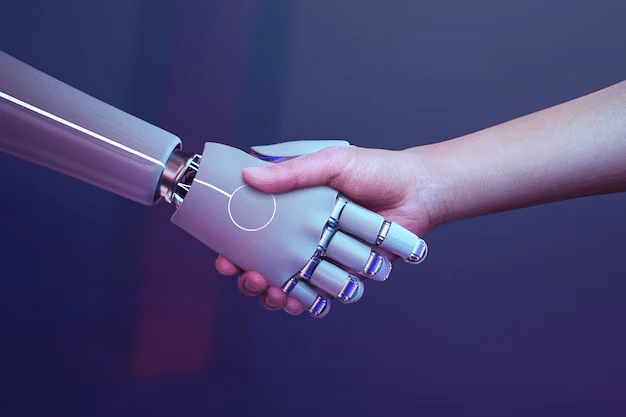The future of work is being shaped by advancements in artificial intelligence (AI) that allow software to take on tasks previously requiring human skills and judgment. There are reasonable concerns about AI replacing human workers across many industries. However, in content creation specifically, rather than full automation, the future points toward humans and AI collaborating effectively to achieve more together than either could alone.
AI Excels at Scale while Humans Bring Creativity
AI tools have demonstrated impressive capability in generating content at scale while meeting basic quality thresholds, surpassing sole reliance on cheap offshore freelance labor. Machine learning models can now produce entire articles, emails, social posts, landing pages, and more with reasonably coherent grammar and topical relevance. As the AI detection accuracy between AI content vs human written content improves, concerns rise over proper attribution and payment for large volumes of machine-generated output.
Yet for content that informs, inspires, connects emotionally, or pushes creative boundaries, human ingenuity still dominates. Machines lack life experience, culture, empathy, and context. Humans intrinsically understand emotion, metaphor, humor, and storytelling. We excel at turning ideas into engaging narratives and compelling arguments. Our versatility and range spans from long-form thought leadership to quick social wit.
The strengths are complementary for collaboration: AI handles rote research, drafting, translations, and personalized variants while humans focus creativity on high-value content.
New Roles Align Human Talent and AI Capabilities
Rather than human jobs being replaced outright, new roles are emerging that align talent with AI capabilities for greater impact:
Creative Directors can focus purely on high-level messaging, framing, ideation, and creative direction while AI generates hundreds of personalized content variations and micro-content modules.
Subject Matter Experts and Community Managers closely vet machine outputs, flag inaccuracies, refine arguments, and maintain brand suitability.
Human-in-the-Loop systems have human and AI collaborate at each stage from research to drafting to revision. Humans working closely with the algorithms leads to better machine learning over time while benefiting from machine capabilities in the moment.
User experience writers develop persona and journey frameworks while AI generates modular content variants tailored to different segments and stages. Quality assurance remains critical, as does close monitoring of analytics, but the combined throughput is exponentially higher.
Governance and Ethics Around Data and Attribution
As the adoption of AI accelerates, standards and policies must balance business efficiency with ethics. Automated content should follow best practices for accessibility and inclusion. Brand safety and suitability guardrails are imperative when algorithms interact directly with customers.
Unfortunately, there is a real risk of bias and abuse without enough human oversight – AI left unchecked reflects the worst of human prejudices back at us. Governance models must support proper attribution, fair compensation, and full transparency over data rights and copyright. Rather than allowing unchecked commercial exploitation of human creativity purely for machine training, the huge benefits of AI must be shared equitably with an empowered human workforce.
The Future is Collaborative
The future of content creation will involve both disruption and opportunity as AI capabilities infuse into workflows. With a collaborative human and machine approach prioritizing ethics, creative excellence, and mutual growth, it promises to unlock new levels of innovation, relevance, and scale. But only if governance also evolves quickly enough to support the humans who train the machines.
The machines need our creativity. We need their capabilities. Together we will build the future.






